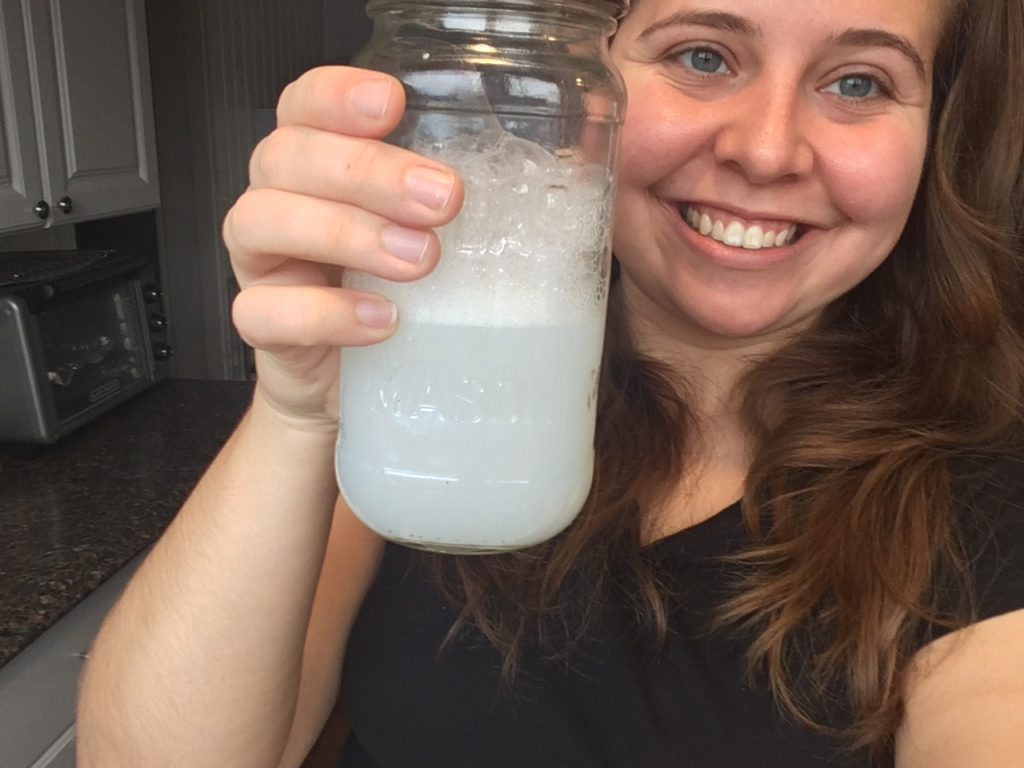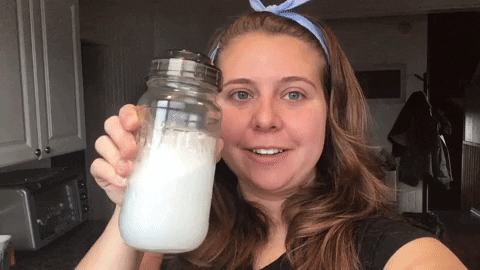I tried making homemade dish soap. Here’s how it went.
Like many wayward millennials, I have spent the lion’s share of my early 20s living in apartments without a dishwasher. Dishwashers may be more energy-, water- and soap-efficient than hand washing dishes, but in big cities, they’re as much of a luxury as walk-in closets or rooftop patios. When I lived in the Bay Area, I could go through a bottle or two of dish soap a week — and nearly as much lotion to ease my dry, cracked fingers. With homemade dish soap, I could have spared myself the cost and agony.

Many commercial dish soaps contain substances that can not only irritate your skin, but agitate respiratory health, exhibit developmental and reproductive toxicity and harm water sources and aquatic life as they make their way down the drain.
The Environmental Working Group (EWG), an activist group that grades products based on the ingredients’ impact on factors like environmental health, asthma and respiratory health and skin irritation, gave 51 of the 297 “hand washing detergents” listed the lowest possible grade of F. A whopping 134 fared little better, scoring a D.
Some of the ingredients of highest concern include formaldehyde, sodium borate, sulfuric acid and triclosan, which have been linked to vision damage, cancer and “acute aquatic toxicity.”
For those of you running to check the ingredients on your household dish soap, know that there is no requirement for companies to list the ingredients in household cleaning products. In fact, companies can choose to use vague catchall terms for highly toxic chemicals, like “surfactant,” “colorant,” “cleaning agent,” “fragrance” or “preservative” (the EWG automatically gives these ingredients an F rating).
Here’s a personal example: the commercial dish soap I have been using up until now, which I purchased haphazardly at the grocery store because it was advertised as “pure” and “clear” (for a premium, I might add) was one such product that didn’t list any of its ingredients. I checked the EWG website: F. Watch out for greenwashing, folks. Even your friendly neighborhood homesteading and sustainability columnist is susceptible.
When commercial dish soap formulas are adjusted, though, there are some concerns about compromising effectiveness. The New York Times reported a public outcry in 2010 when popular commercial dish soaps and detergents reduced the amount of algal bloom-causing phosphates in their products. Customers complained about unclean dishes and dusty white residue left behind on glasses.
Though my current apartment is (thankfully) dishwasher-equipped, Thanksgiving is right around the corner, and despite my best efforts to Tetris dishes, I am sure I will have plenty to hand wash. I figured there must be a happy medium: a homemade dish soap that will cut through grease and leave my glasses shiny and fresh without doing undue damage to me or the environment.
Learning to try
I found a set of instructions from Kitchn that combined the instructions from two other DIY bloggers: Kristin at Live Simply and Christine at The Hippy Homemaker. The recipe was tested and comprehensive, so I figured it was my best bet to find a homemade dish soap that worked.
Most recipes have something in common: Sal Suds from Dr. Bronners, an all-purpose cleaner (not a soap, the website insists — that is the purview of their castile soap) made with plant-based detergents and pine-scented essential oils without synthetic dyes, fragrances or preservatives. Apparently, Sal Suds Liquid Cleaner is equally effective in hard or soft water, cruelty-free and biodegradable. The EWG awarded Sal Suds an A rating, one of only 49 handwashing detergents on the listing to do so.
I couldn’t find Sal Suds in the aisles of any of my area big box stores (though it is carried online), but it was stocked in the cleaning aisle of the local health food store, the Natural Living Center in Bangor. Per usual, I should have checked there first.
I already had the other materials required, except for a dispenser for my dish soap. Lacking any empty decanters, I took a used (cleaned) spaghetti jar and a reusable, screw-on top that turns mason jars into drinking cups. Eat your heart out, MacGyver.
The final step — compiling dirty dishes to test my homemade dish soap’s efficacy — was perhaps the easiest part of prep. Between the mess I always make when I cook and the Friendsgiving festivities I just attended, my sink was filled to the brim with greasy, crusty cookware, ready to be cleaned.
https://www.youtube.com/watch?v=ketJbh8HHMg&feature=youtu.be
A trying experience
Preparing homemade dish soap is easy: just mix equal parts warm water, white distilled vinegar and Sal Suds with a dollop of essential oil and some salt for thickening. Between the scent of the Sal Suds and the generous helping of lavender essential oil (the instructions called for a tablespoon, which is more than I have used in any other DIY), the mixture smelled stronger than I expected.
I transferred the solution to my creative decanter and poured some onto the sponge (not, I admit, an especially eco-friendly or biodegradable sponge — sorry, folks, I will be better). The homemade dish soap is considerable more liquidy and less viscous than commercial products, and it poured out of my thrifty “nozzle” much faster than I expected, but I figured a few extra suds wouldn’t hurt.

My homemade dish soap worked remarkably well. The grease on my crockpot didn’t stand a chance. My glasses emerged sparkling from the soapy morass. Even my sink, which does not have a garbage disposal and usually suffers from a chronic, lingering stinkiness, looked and smelled fresher.
My homemade dish soap was not able to remove the cranberry sauce stain from my wooden cutting board, but I do not think a commercial dish soap would have fared any better. My old cutting board is irreparably scratched and stained, and I honestly need a new one (and find a different use for my old cutting board). Plus, cranberries can create a potent dye that can even be used to color clothes (perhaps that will be my next column).
Satisfied with my handwashing experience, I left my squeaky clean dishes in the sink-side rack to dry. My even hands felt soft afterward: no pruning, and no lotion necessary. Plus, I felt much better watching my environmentally-friendly suds go down the drain.
My tried-and-true takeaways
Not only is homemade dish soap inexpensive, easy to make and good for the environment, but between my soft hands and sweet-smelling sink, I actually found it to be a superior cleaner to my store-bought soap. I highly recommend preparing some for yourself, even if it means you don’t have an excuse to get out of Thanksgiving dish duty this year.

Sam! You’re my hero! I made lip balm last week and it came out great. I’ve made a lot of my own products (except soap) but I did not like the dish soap recipe I used before so now I’ll try yours.
Thanks for speaking the truth about the toxics we wash down the drain. There are so many. I love reducing our dependency on fossil fuels and creating less plastic waste.
Hi there,,, I’m not exactly comfy with SalSuds use of Sodium Laurel Sulfate…no matter what she says in her video. You?
How much salt?